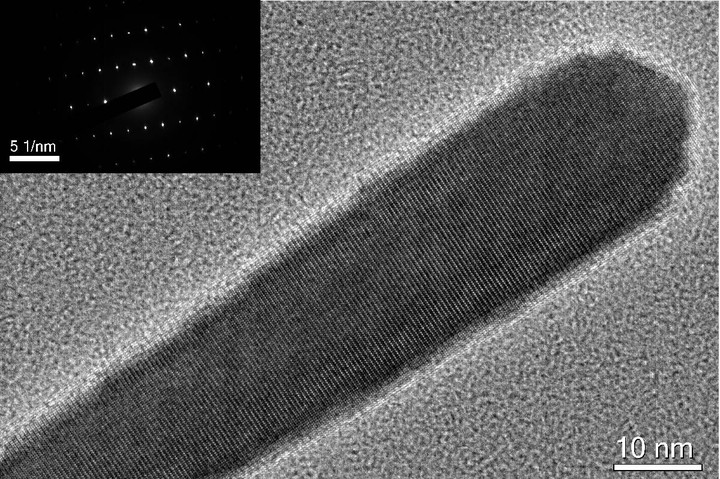ZnO Nanowires for Hybrid photovoltaics

This project was short-lived, but was part of the initial work I performed upon arriving at the University of Maryland for my Ph.D. Combinations of inorganic nanostructures and organic materials can improve both the absorption and mechanical properties of photovoltaics. These types of cells are known as “hybrid” photovoltaics. Incorporating ZnO nanoparticles is known to enhance the order of liquid crystals, which greatly improves hole mobility in the combined device.1 The goal of this was to investigate if using ZnO nanowires (instead of nanoparticles) could enhance this effect by providing a continuous pathway for electron conduction through the nanowires.
To this end, the initial work on this project involved fabricating uniform arrays of ZnO nanowires following on previously published methods,2 based off of the vapor-liquid-solid (VLS) technique. We characterized the effects of the various chemical vapor deposition experimental parameters, including gas flow, O2 partial pressure, Zn source powder mass, and total gas flow rate, optimizing for uniform and aligned ZnO nanowires. The nanowires were characterized using high-resolution transmission electron microscopy (HRTEM) (see photo above) and X-ray diffraction (XRD) to determine crystallinity and nanowire quality.
Unfortunately, the funding for this project expired soon after this initial work, and further development of the methodology was prevented.
-
L.J. Martínez-Miranda, et al., Applied Physics Letters 97, 223301 (2010). ↩︎
-
J. Park, et al., Journal of Crystal Growth 258, 342 (2003). ↩︎